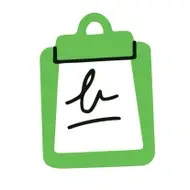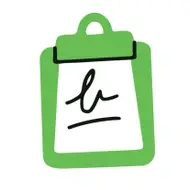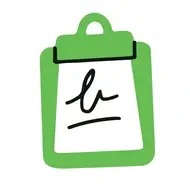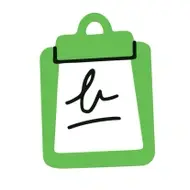Hire Impact | Idealist's Guide to Onboarding New Employees

If you’ve made it this far, you’ve received and read countless applications, interviewed candidates, checked references, landed on “the one,” and they’ve accepted the role. Congratulations! Now, feel free to sit back and enjoy a coffee.
If only.
It’s the work that comes after the recruitment and hiring process—onboarding a new staff member—that’s the most important piece of the employee retention puzzle. Many new employees who leave a job in the first six months do so because they didn’t receive clear guidelines on responsibilities or adequate training or clear guidelines on responsibilities. Others report not getting enough time with managers and colleagues.
To make the most of your investment in a new employee, take some time now to consider what needs to be in place before they begin, and how to best bring them fully onto the team.
Onboarding a new employee
The period before a new staff member starts is a great opportunity to reflect on your expectations and needs for the role. It’s also a time to surface those parts of your organization’s culture that usually go without saying; those routines or bits of organizational culture that new staff may simply pick up on after some time in the office. If you’re working remotely, these cues will be near impossible for a new staff member to discern on their own. Consider expectations and norms around in-office (or virtual) face time, attire, late night or weekend work, or lunch breaks and vacation days. Also give some thought to how you will communicate these to the new staff member.
As you consider what you need from the role and staff member, we recommend using the Preferences-Traditions-Requirements framework from our friends at The Management Center. For the sake of equity and inclusion, you may want to focus only on requirements, citing preferences and traditions but allowing new staff to have space to offer their own preferences as well.
Here are a few more things for the Manager Think-Ahead list:
- Write down your working hours and anything else your new hire should know, e.g. you have to take your parent, child, or puppy to the allergist on Thursdays at 2 p.m.
- How does your organization plan and review work/performance? Note the specifics of this, from frequency to method.
- You may want to consider a New Hire Review. At Idealist, we do this typically six weeks in, providing questions to new staff and managers about how things are going, what’s really working, and what might need improvement. We also involve frequent collaborators of the new staff member to give 360 feedback.
- Think about communications preferences. Do you like to receive a call after hours if there is a work emergency, or do you prefer that it comes in a text message? What counts as an emergency? Do you like to receive messages via Slack or other instant messaging platforms, or do you prefer email?
- Are there any recurring due dates or special events like an org-wide retreat or annual fundraiser where everyone is involved/affected? Check the calendar and jot these down to share out later.
- Does your organization require a uniform way of tracking projects and tasks, like in Asana, Trello, or other systems? You’ll want to plan an overview of this with a new staff member. If you prefer that work is tracked a certain way, be sure to note that.
- This is a big one: what expectations do you have for the qualities that the new staff member will bring to their work and to your organization? Qualities we often mention to new hires include: flexibility and adaptability, initiative, follow through, and that they’ll make sure to surface questions and concerns. Also take into consideration what the new staff member should expect of you. Hopefully the same qualities you expect from them, as well as a more hands-on approach at first; coaching, feedback, and support; and anything else that’s specific to your work.
For some more logistics-minded to-do items, check out our New Hire Checklist template.
Onboarding and training processes for a successful start
First two weeks
Below, we highlight suggestions for a new hire’s first two weeks on the job. When you create a customized schedule for a new employee, share it in advance so they know what to expect.
We also suggest assigning independent tasks to the new employee right away, scaling up to actually performing the role. For example, you could start with reviewing marketing materials, then a few days later ask for a draft of a new email to your volunteers.
Back when the Idealist team all worked from our NYC office, we used to share a meal on someone’s first day. Working remotely has changed that, of course, but we suggest bringing lunch or a snack in front of the computer and sharing a (remote) meal in the first couple of weeks, getting to know each other informally.
Day one
We recommend that new hires start on Tuesday or later, letting the week begin before you jump in with such an important experience. In the same vein, we recommend having the new hire start the day about an hour after the hiring manager’s day begins, giving the hiring manager time to settle in and get situated before the new team member arrives.
For the first day, which can be exhausting, we suggest starting with the nuts and bolts of set up, and how you’ll work with the new staff member.
- Provide time to set up a computer, log in to various systems, and begin reading emails.
- Office tour, if in person.
- Give an organization overview that offers context to your history, mission, important milestones, and team/staff.
- Walk through benefits and other human resources matters.
- Review a detailed job description. When we’re hiring at Idealist, we publish a slimmed-down version of a job description, better labeled a “job advertisement.” Like all advertisements, it leaves out details. When we go line by line in a job description with a new employee, we review a much more detailed version to give full insight into the ins and outs of the role.
- Schedule your weekly or biweekly check-ins. Give these meetings a structure with an agenda that the staff member prepares in advance; we like to use The Management Center’s format and customize as needed. Make sure to keep the sections on two-way feedback: it can encourage conflict-averse staff to share concerns before they become a bigger issue.
- Outline temporary processes. In the first one to three months, you may want to confirm that the new staff member understands an assignment or next step. You could do this by ending meetings with a verbal summary from the staff member, noting what they understand to be what’s next; this could also be achieved in an email after a conversation.
- Any of the findings from your Think-Ahead list.
Day two
Today might be a good day to do a deeper dive into the team and work.
- Review communities and populations that your organization and team serve.
- Give an overview of past and ongoing projects. You may also want to highlight goals and results, and share resources related to the work for further perusal. You’ll definitely want to note the staff member’s role in any ongoing work or future iterations.
- Offer ideas of associations, networks, publications, and other resources that might help the staff member grow their knowledge of the organization or their specific role. Other ideas include workshops, classes, and conferences that will enhance their professional development.
Day three
- Whether remote or in person, intentional meet and greets are a great way to get to know staff, organization culture, and even the nuances of work and projects. At a smaller organization, these meetings can happen one-on-one or in small groups. At larger organizations, you may want to stick to those that the new staff member will likely interact with on a regular basis. We suggest prescribing topics ahead of time for new and current staff alike, as well as time-bound meetings, to keep everything on track. While these start in the first week, they may continue for weeks to make sure the new staff member gets time with everyone.
- This might be a good time to dig into the tools and platforms the new staff member will need to do their work. Whether it’s Salesforce, Raiser’s Edge, Google Analytics, or a custom solution, review the systems your organization uses and any tips and tricks you’ve learned along the way. Go deeper on the specific workflows that the staff member will take on, perhaps even giving them a task that can show their comprehension of what they’ve learned so far.
Day four
- Check in on how things are going so far: is onboarding going too slowly? Too fast? Does anything require further explanation? Answer the staff member’s questions and be open to any feedback about how to tweak this process for future hires.
- While meet and greets continue, you may want to make sure the new staff member gets additional time with certain people on the team, like a finance manager, to make sure new staff understand how reimbursement and purchasing work. Or if you’re onboarding a fundraiser, time with program staff might help ensure they understand the details of the work when they’re communicating with donors.
Week two
This may be the right time for new staff to jump into the job in a bigger way. You may want to start with a new employee shadowing a process, task, or aspect of the role. Provide ample time for them to ask specific questions. We suggest having someone shadow for the next few iterations.
When everyone is feeling comfortable, the new staff member and manager could flip roles, with the manager shadowing. Immediately following that role reversal, the manager could give feedback on what went well and what could be done to strengthen their performance.
The next step in the learning process is for the staff member to do the task or process alone. After the fact, they can report back on how it went, offering self-assessment of successes and “do-differentlys.”
In the first few weeks, you might want to stick to training for tasks that are easy wins for the new hire, such as core tasks that can be focused on first before moving on to advanced responsibilities.
Week two might also bring some administrative work, like drafting their biography for an Our Team / Our Staff page on the website, or proofing business cards.
Retention starts with good onboarding
Bringing on new staff can be so exciting. It’s a chance to reinvigorate work with fresh ideas, diverse perspectives, and––let’s be honest––less on your plate. The actual onboarding of staff is a serious and important duty, one that requires planning and consideration of what you and your organization require of employees.
We hope that you’ll take our suggestions, remix them with your own learnings, and create a bridge from a new staff member’s first day to the rest of their career, helping your organization to build a better world.
More resources on remote onboarding
- 6 Ways to Get to Know New Staff When You Can't Meet in Person
- Reimagining Social Impact | Resources for a Remote Workplace
- **
If you enjoyed this guide, don't miss the last part of our Hire Impact series, Setting Employees Up for Success, for more tips, tools, and resources to retain excellent employees at your organization.






